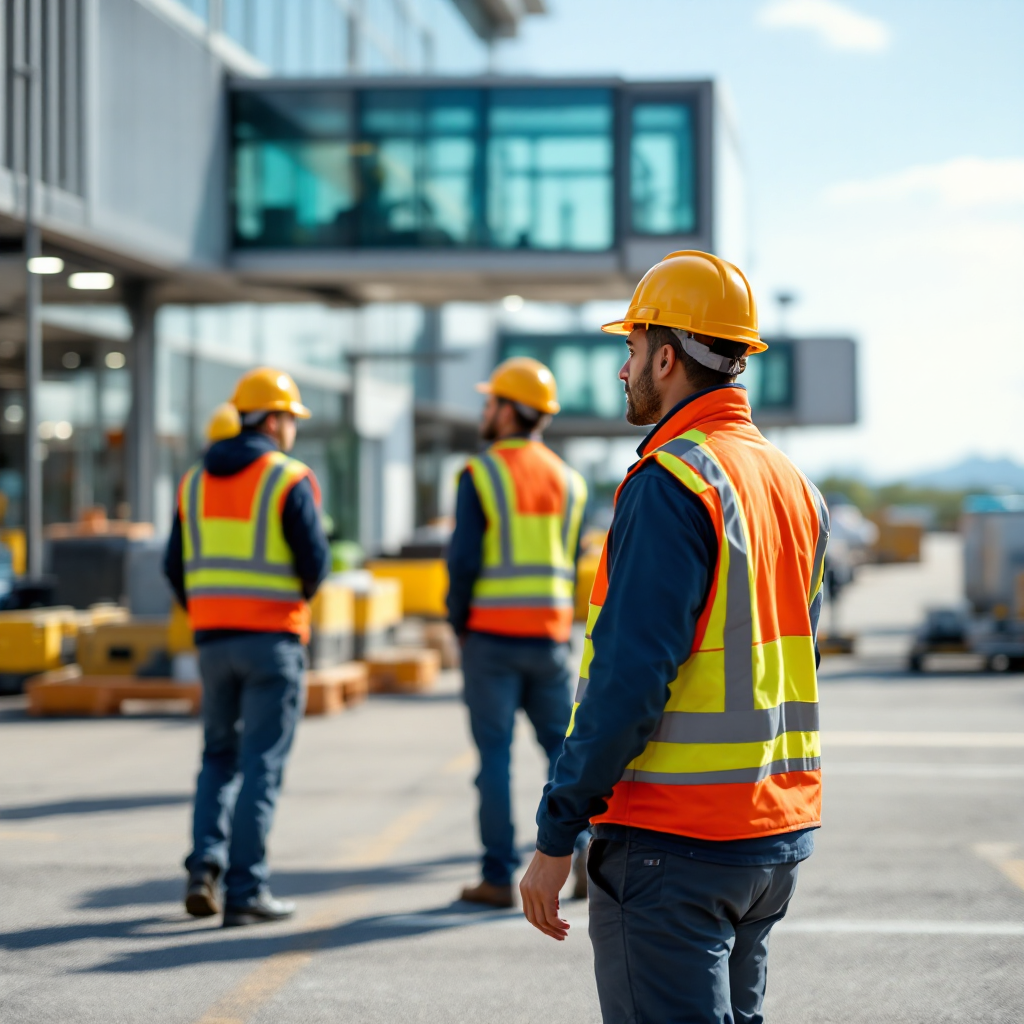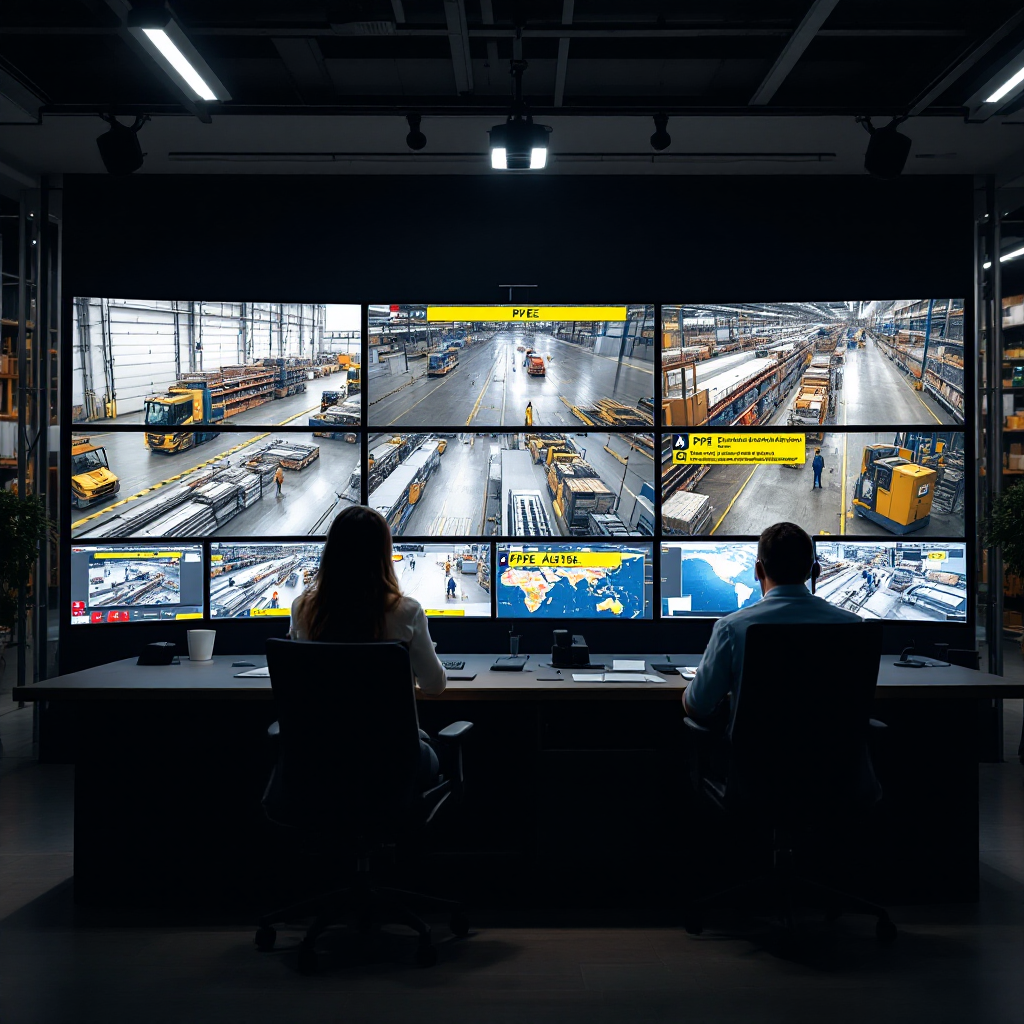The role of ppe compliance in airport workplace safety
In busy apron and terminal zones, enforcing PPE reduces incidents and protects teams. First, clear rules about wearing the required ppe save lost work hours and cut administrative overhead. For example, improvements in detection sensitivity by about 30% combined with manual checks have been shown to improve screening outcomes, a principle that applies to PPE monitoring as well (evaluation of airport screening systems). Second, manual checks place strain on supervisors. They depend on sight-lines, shift patterns, and human attention. As a result, supervisors often face the need for manual verification and heavy oversight during peaks. This makes manual compliance costly and labor-intensive, and it consumes valuable time and resources.
Third, automated options help minimize human error and speed response. Automated ppe detection lets teams automatically identify and alert ppe breaches, and therefore route incidents to the right operator. Visionplatform.ai uses existing CCTV and local models so operators retain control, and so data stays on premises. In addition, our platform supports operational workflows and streams events to business systems for follow-up. The academic record also notes that “computerized compliance of Personal Protective Equipment (PPE) is an emerging topic” (systematic review on computer vision-based PPE compliance), which reinforces the move away from pure manual checks.
Finally, better compliance reduces the chance of an accident and supports worker safety. With targeted monitoring, teams can proactively enforce ppe and improve adherence to safety protocols. This model helps reduce the risk of repeat incidents and supports both health and safety goals and broader safety compliance across operations.
Key personal protective equipment for apron operations
Apron operations rely on a small set of essential gear. Staff must use high-visibility vest and hard hat on the ramp, wear hearing protection near running engines, and don gloves when handling cargo. The phrase required ppe captures this baseline. These items are practical and visible. They also match ICAO guidance and many local safety standards, and they support safety regulations used by ground handlers and carriers.
Risk hotspots include loading bridges, ground vehicles, and baggage handling areas. For example, vehicles crossing near jetways create high-risk points where a missed vest or helmet can cause injury. At these locations, supervisors must quickly identify any individuals who are not wearing the right protective gear and act. To help, systems can classify people and vehicles, and so trigger a supervisor notification if there is a breach. Real world airports already apply targeted monitoring in similar ways; see how people-focused vision is used in airport projects (people detection in airports).
Regulators expect visible PPE, and employers must document adherence to safety standards. For apron teams, documentation also helps with operational efficiency and with audits. In practice, combining human checks with automated alerts lowers risk, and it makes it easier to ensure worker safety in hazardous zones. Industry groups describe this mix as an effective way to enforce ppe while keeping ramp workflows moving.

AI vision within minutes?
With our no-code platform you can just focus on your data, we’ll do the rest
ai-powered camera systems for real-time ppe detection technology
AI-powered vision has advanced quickly, and modern models detect complex scenes in seconds. Deep-learning algorithms to automatically identify PPE classes work well in crowded airport contexts. For example, a YOLOv7-based model produced higher accuracy and faster inference than prior generations in tests of PPE recognition, making it suited to live operations (YOLOv7 PPE compliance study).
Systems that employ AI cameras often use a multi-class approach to detect vests, hard hat, masks, and gloves simultaneously. This enables personal protective equipment detection across dozens of streams with minimal false alarms. In practice, an ai ppe detection pipeline employs AI algorithms that classify image regions, then apply business rules to decide whether to alert an operator. Vendors and operators should compare latency and accuracy benchmarks before deployment, and should also verify that detection is available under different lighting conditions and occlusions.
In airport workspaces, computer vision models must meet real-time requirements for practical use. Real-time inference at the edge reduces cloud round-trips, and therefore reduces the chance of lost frames. Also, edge inference helps keep sensitive footage local for GDPR and EU AI Act concerns. For more context on how to deploy edge safety analytics, see our guide on platform and edge safety detection (platform edge safety detection AI).
Finally, when selecting models, teams should look for solutions that allow retraining on site. That way a model can learn unique uniform colors, unusual helmets, or special contractor vests. So, using AI with local data increases accuracy, and thus helps improve workplace safety while reducing false alarms and supporting operational efficiency.
Integrating ppe detection technology into safety and security frameworks
Good integration links ppe detection with CCTV, access control, and perimeter sensors to form a coherent safety and security posture. Detection technology should stream structured events into the management system and into dashboards. Then, when a person lacks a vest or a hard hat, the system can trigger an alarm and send a short notification to duty staff. This approach helps security teams and operations staff act quickly.
Integration must include clear alert flows. For example, an event can first generate an on-screen thumbnail and then alarm an operator if not acknowledged. If conditions persist, the system can trigger escalation to a supervisor. These steps reduce the need for constant human monitoring and allow teams to proactively manage adherence and manual compliance. In addition, tie-ins with access control help quickly identify unauthorized access to restricted zones.
Privacy and policy matter. Video analytics must be designed so data stays within approved boundaries. Solutions that default to cloud-only processing can raise data and EU AI Act risks. As an alternative, on-prem and edge-first deployments let organisations own their models and logs and thus better safeguard personal data. When picking a vendor, ask how the platform supports audit logs, retention rules, and the ability to stream events without sharing raw video. Finally, modern systems can support a broader security risk strategy, as noted in government reviews on perimeter and access control (GAO report on airport access control).
AI vision within minutes?
With our no-code platform you can just focus on your data, we’ll do the rest
Deployment of an ai solution on the apron and workplace
Camera placement is crucial. Mount cameras to reduce occlusion and to keep faces and helmets visible in profile. Angles that look down along typical movement paths work well, and so do positions that capture loading bridges and vehicle corridors. Teams should test during peak operations and at night. Thermal cameras can augment visible cameras at low light for people presence, while visible cameras classify protective gear.
Next, architecture decisions affect latency. Edge deployments run inference locally and so minimize round-trip time. Cloud-native deployments can serve large fleets, but they need robust cloud connectivity to meet low-latency goals. Hybrid setups offer balance: some inference runs at the edge, while aggregated analytics run in a central system. Visionplatform.ai supports NVIDIA Jetson and GPU server deployments, so you can scale from a few streams to thousands while keeping data local.
Staff training matters for adoption. Operators need clear procedures when an alarm fires. They must know how to verify a thumbnail, how to alert a supervisor, and when to log incidents into the management system. Change management should emphasise how automated alerts reduce interruptions and free supervisors to focus on complex issues rather than routine checks. Properly planned deployment will streamline workflows and ensure the system is accepted by ground teams.

Using ai to optimize ppe compliance with detection technology
Once deployed, analytics and dashboards show trends and gaps. Key metrics include compliance rate, incident reductions, and the operational efficiency gains from reduced manual checks. Dashboards can visualise where adherence is poor, which shifts need attention, and which contractor groups require retraining. In turn, this helps teams optimize schedules and training programs and so help reduce the risk of repeated breaches.
Continuous improvement needs data feedback loops. Retraining models on edge footage improves accuracy for local uniforms or atypical helmets. An ai-driven approach employs cameras and deep-learning algorithms that can classify uncommon PPE variants and adapt over time. When detection is available across the network, decision-makers can correlate PPE trends with incident reports to quantify risk of accidents and to set priorities.
Finally, measured benefits include fewer stoppages, faster incident response, and better adherence to safety standards. By using analytics to streamline reporting and by feeding alerts into operations, teams can quickly identify patterns, enforce corrective action, and ensure compliance. In short, AI ppe detection supports both safety goals and business metrics while helping safeguard teams and improve workplace safety.
FAQ
What types of PPE can AI systems detect?
AI systems can detect common items like high-visibility vest, hard hat, helmet, gloves, and masks. They can also be trained to recognise site-specific protective gear and special contractor uniforms.
Can automated ppe detection run on existing CCTV?
Yes. Many solutions, including on-prem platforms, use existing camera feeds and integrate with VMS. This approach reduces deployment cost and uses footage you already have.
How accurate is PPE detection in crowded apron areas?
Accuracy varies by model and conditions, but modern models such as YOLOv7 have shown strong performance in complex scenes (YOLOv7 study). Retraining on local footage further improves results.
Will video analytics violate staff privacy?
Properly configured systems keep raw video local and stream only structured events. On-prem and edge-first deployments help meet GDPR and EU AI Act requirements while still providing operational alerts.
How do alerts and notifications work in a live system?
An event can generate an on-screen thumbnail, a notification to the control room, and an escalation to a supervisor if unacknowledged. This staged approach reduces false alarms and focuses attention where it matters.
What infrastructure is needed for low-latency detection?
Edge GPUs or local servers provide the lowest latency. Hybrid cloud setups work as well, but they require reliable cloud connectivity. Many operators deploy a mix of edge inference and central analytics.
Can PPE models be customised for my site?
Yes. Platforms that allow retraining on local footage can add site-specific classes and reduce false positives. Visionplatform.ai supports model retraining and private datasets for this reason.
How does PPE detection tie into broader safety and security systems?
PPE events can stream into access control, incident management, and operational dashboards. This integration helps teams understand patterns and proactively manage adherence and unauthorized access.
Is automated PPE detection useful beyond airports?
Absolutely. Similar approaches apply to construction sites, ports, depots, and transit systems where protective gear is required. Automated detection helps enforce PPE across many high-risk industries.
What metrics show ROI for PPE detection projects?
Typical metrics include increased compliance rate, reduction in incident-related downtime, fewer manual inspections, and improved operational efficiency. Dashboards that link detections to incident logs make ROI calculations practical.

